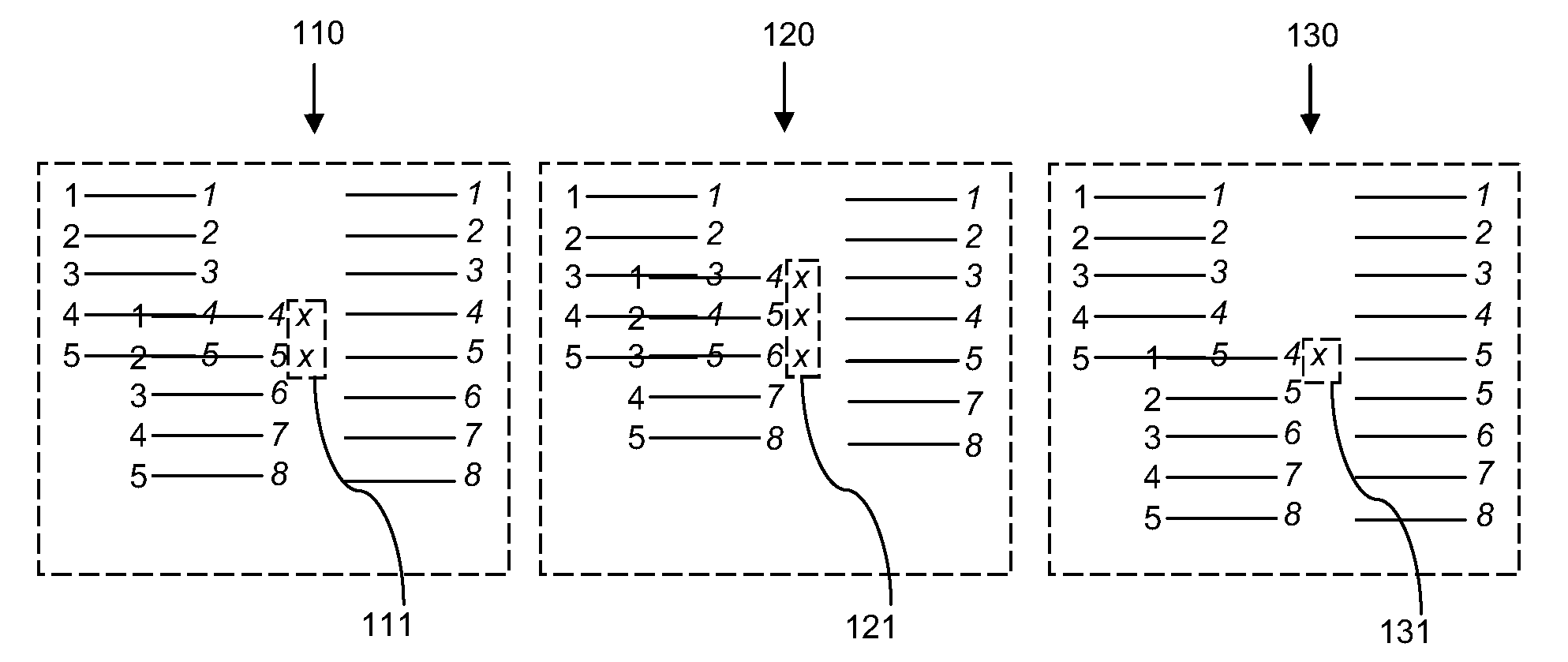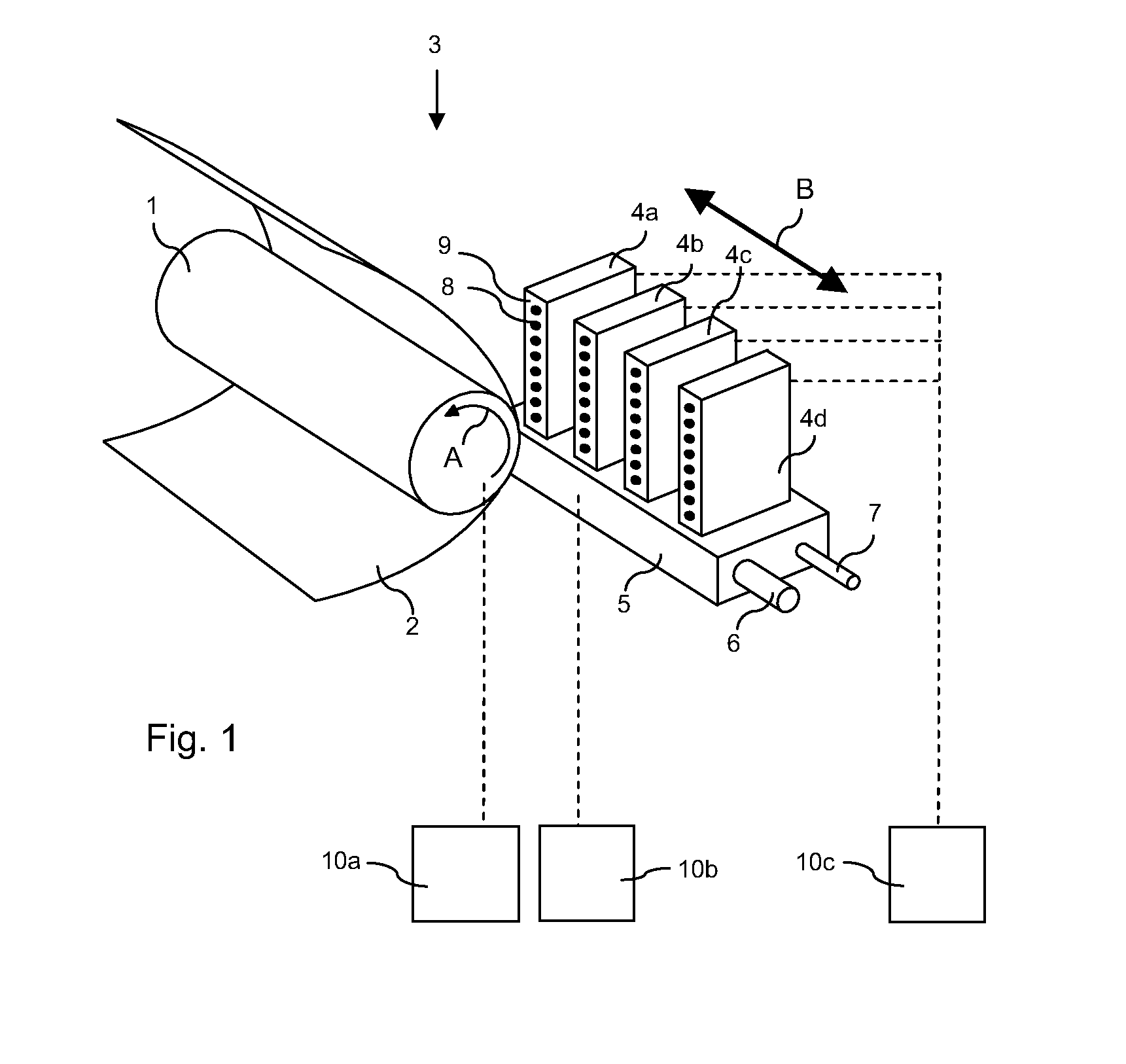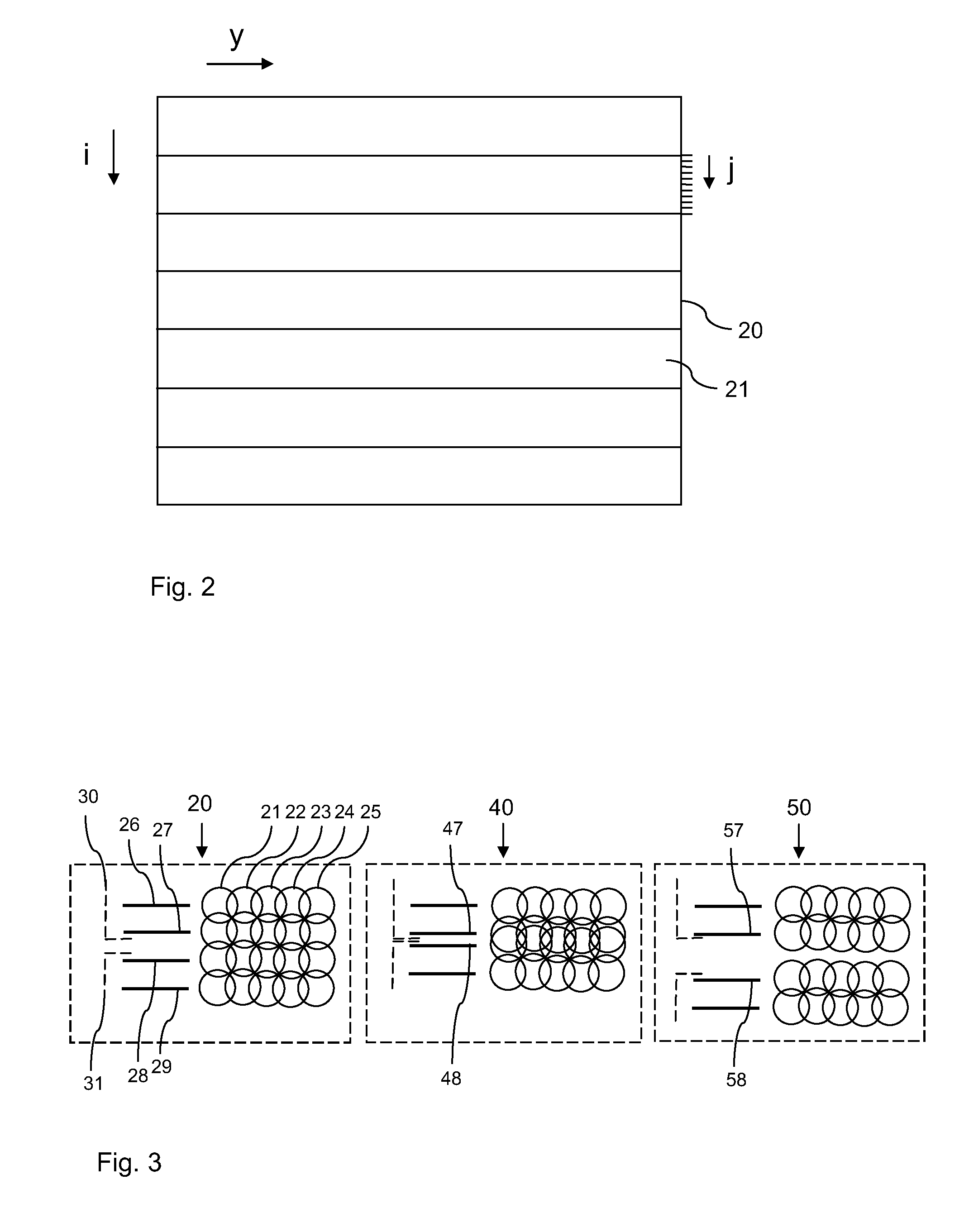Method for printing contiguous swaths
a contiguous swath and printing technology, applied in printing, other printing apparatus, etc., can solve the problem of not being able to change the relation between the print element and the image line, and achieve the effect of shortening the processing time for defining and applying the digital mask and being significan
- Summary
- Abstract
- Description
- Claims
- Application Information
AI Technical Summary
Benefits of technology
Problems solved by technology
Method used
Image
Examples
Embodiment Construction
[0030]FIG. 1 shows an ink jet printing assembly 3 that may be applied for the invented method. The ink jet printing assembly 3 comprises supporting means for supporting an image receiving member 2. The supporting means are shown in FIG. 1 as a platen 1, but alternatively, the supporting means may be a flat surface. The platen 1, as depicted in FIG. 1, is a drum, which is rotatable about its axis as indicated by arrow A. The supporting means may be optionally provided with suction holes for holding the image receiving member in a fixed position with respect to the supporting means. The ink jet printing assembly 3 comprises print heads 4a-4d, mounted on a scanning print carriage 5. The scanning print carriage 5 is guided by suitable guiding means 6, 7 to move in reciprocation in the main scanning direction B. Each print head 4a-4d comprises an orifice surface 9, which orifice surface 9 is provided with at least one orifice 8. The print heads 4a-4d are configured to eject droplets of m...
PUM
 Login to View More
Login to View More Abstract
Description
Claims
Application Information
 Login to View More
Login to View More - R&D
- Intellectual Property
- Life Sciences
- Materials
- Tech Scout
- Unparalleled Data Quality
- Higher Quality Content
- 60% Fewer Hallucinations
Browse by: Latest US Patents, China's latest patents, Technical Efficacy Thesaurus, Application Domain, Technology Topic, Popular Technical Reports.
© 2025 PatSnap. All rights reserved.Legal|Privacy policy|Modern Slavery Act Transparency Statement|Sitemap|About US| Contact US: help@patsnap.com



